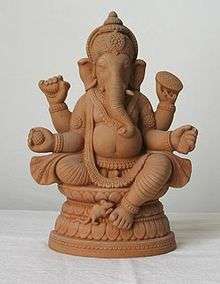Man and his Becoming according to the Vedanta

Man and his Becoming according to the Vedanta is a book by René Guénon. The Introduction to the Study of the Hindu doctrines had, among its objectives, the purpose of giving the proper intellectual basis to promote openness to the study of eastern intellectuality. The study of Hindu doctrines is continued in his book Man and his Becoming according to the Vêdantâ by taking the specific viewpoint of the human being's constitution according to the Vêdantâ: René Guénon states that his goal is not to present a synthetic exposition of all vedic doctrines "which would be quite an impossible task", but to consider "a particular point of that doctrine", in that case the definition of the human being, in order to contemplate afterwards other aspects of metaphysics.
The book begins in precising the nature of the Vêdantâ, its profound signification as the "end of the Vedas", and the traditional signification of Shruti and Smriti scriptures:
the distinction between shruti and smriti is, fundamentally, equivalent to that between immediate intellectual intuition and reflective consciousness; if the first is described by a word bearing the primitive meaning of 'hearing', this is precisely in order to indicate its intuitive character, and because according to the Hindu cosmological doctrine, sound holds the primordial rank among sensible qualities.
The fundamental texts called Mimânsa (Pûrva-Mimânsa, Uttara-Mimânsa), the Upanishads, the Brahmâ-Sûtras, along with Hindu cosmological texts are listed, and the notion of "intellectual function" associated to their origin is proposed, as opposed to the profane notion of "author".
The general considerations of the "Self", the "Unmanifested" and the universal "Manifestation" are then introduced: the "universal Manifestation" is all that exists and its development is constantly being in progress, towards destiny. The "Unmanifested" is all that is beyond universal Manifestation, so that it can only be designated by negation. The second chapter also establishes the fundamental distinctions between the "Self" and the ego, or "personality" and "individuality", the first being the only One that is "absolutely real". These ideas are declined in different denominations depending, for a first part, on the different degrees of reality considered, and also from the "transcendent" and "immanent" point of views that can be contemplated: Ishwara is the "Divine personality" or the Principle of universal Manifestation. It is unmanifested, for the Principle of Manifestation cannot be Itself manifested (this is in relation to the symbolism of "black heads": Ishwara has Its head in "darkness"). Atmâ, Paramâtmâ, Brahmâ: the realization that the Self, "in relation to any being whatsoever, is in reality identical to Atmâ", constitutes the heart of the Hindu doctrine of "delivrance" or "moksha", and that doctrine is absolutely identical to what Islamic esoterism calls the "Supreme Identity" (that is to say, expressed in Hindu terms, the identity of Atmâ and Brahmâ):
"the 'Supreme Identity', according to an expression borrowed from Islamic esoterism, where the doctrine on this and on many other points is fundamentally the same as in the Hindu tradition, in spite of great differences in form."
If the "Supreme Identity" (or "moksha" or "delivrance"), is made possible, through realization, it is because at the very heart of the human being (not to be confused with the heart organ of the corporeal envelope) is found what is called Brahmâ 's journey, or Brahmâ-pura.
"What resides at the center of the human state is Purusha, or Brahmâ considered "inside" (or "at the center" of) the human being. Purusha, in order that manifestation may be produced, must enter into correlation with another principle, although such a correlation is really non-existent in relation to the highest (uttama) aspect of Purusha, for there cannot in truth be any other principle than the Supreme Principle, except in a relative sense. The correlative of Purusha is then Prakriti, the undifferentiated primordial substance, a passive principle represented as feminine, while Purusha, also called Pumas, is the active principle, represented as masculine; and these two are the poles of all manifestation, though remaining unmanifested themselves. It is the union of these complementary principles which produces the integral development of the human individual state, and that applies relatively to each individual."
Man and his Becoming according to the Vedânta, p.39.
From there, all different degrees of individual manifestation can be described and named, and in particular the tanmatras, the mind or manas in its role of coordinator of internal and external faculties, the five vayus, the different prânas, and the distinctions between the waking state, the dream state, and the deep sleep state.
The book ends with a description of the reabsorption of the individual faculties, either in the posthumous conditions, or in the spiritual process of realization, up to the "final delivrance" or "Supreme Identity", which is the ultimate goal of any true spiritual path.
